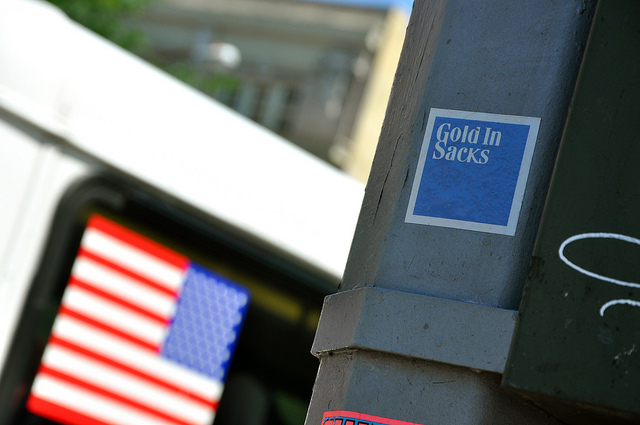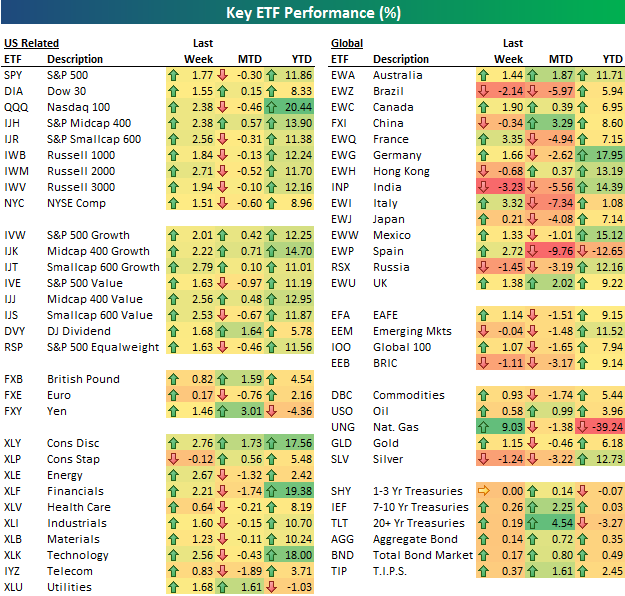By: Steve Sosnick, Chief Strategist, Interactive Brokers
Markets are on perpetual watch for an appearance of Goldilocks, and she might have made an appearance this morning. This morning’s employment report was “not too hot, not too cold.” Meanwhile, Apple (AAPL), our flagship growth stock, reported its fourth consecutive quarter with declining year-over-year revenues. For different reasons, both events have great relevance for markets.
Bond traders loved this morning’s payrolls report, plain and simple. In October, Nonfarm Payrolls rose by 150,000, less than the 180k consensus, while last month’s reading was revised down by 39k to 297k. The unemployment rate ticked up slightly to 3.9%, 0.1% over the consensus estimate and last month’s reading. Perhaps most importantly for those who are on inflation watch – essentially everyone – Average Hourly Earnings grew 0.2% on a month-over-month basis, below the 0.3% consensus. Last month’s reading was revised up from 0.2% to 0.3%, meaning that that year-over-year reading of 4.1% exceeded the 4.0% estimate, but that is at best a minor quibble in the larger argument.
The reaction from the bond market was swift and severe. Yields fell across the curve by about 13-15 basis points. The 10-year yield of 4.53% is now 30bp below where it closed last week and 40bp off its level on Tuesday. That is a stunning move by any standards, but the 15bp drop in the 2-year rate is perhaps more meaningful right now. It tells us that traders see a greater likelihood of rate cuts in the near future. Fed Funds futures now show only a 10% chance for a hike by January, down from 32% just yesterday and from 41% immediately prior to Wednesday’s FOMC meeting. They now fully anticipate a cut at the June meeting, up from July, and they show a year-end 2024 rate of 4.37%, down from 4.67% earlier this week.
Liquidity-loving equity traders responded as one might expect, with a rally. The S&P 500 (SPX) and NASDAQ 100 (NDX) are both up just under 1% as I write this, but the real star is the Russell 2000 (RTY), which is up over 2.5%. That outperformance is all about hopes that lower rates will bring easier credit conditions for the myriad unprofitable companies within RTY.
Although the small-cap companies are more economically sensitive than their large-cap counterparts, and thus should suffer if the economy appears to be weakening, the prolonged underperformance of RTY has already priced in those concerns. And among those concerns are fears that the “tighter financial and credit conditions for households and businesses” referenced in the recent FOMC statement will force unprofitable companies to face worries about their access to credit. Even a whiff of easier financial conditions can lead to a big rise in RTY.
The current restrictive monetary conditions have led investors to favor companies with stable earnings and cash flows, and hence less need to borrow at high rates. The poster child for that type of company is Apple (AAPL), which is one of the few high-profile stocks that are trading lower today. Although AAPL reported EPS of $1.46, above the $1.39 consensus, concerns about sales in China weighed on investor perceptions. But for AAPL, investors should be concerned about sales overall. Although total revenues rose sequentially, breaking a three-quarter downtrend, this was the fourth quarter in a row when revenues fell on a year-over-year basis.
Quite frankly, it is hard to reckon with a growth stock whose sales aren’t growing. AAPL is a cash-generating machine, with over $20 billion in positive cash flow every quarter. That has led to a cash hoard of over $160bn. With short-term rates at 5%, that can be a significant contributor to the company’s bottom line, but investors aren’t paying 28X earnings for a company with no revenue growth and only modest EPS growth. AAPL earned $6.13 per share in 2023 (it’s fiscal year just ended); it earned $6.11 in 2022. Is that a growth stock? It will take some time for the market to decide whether to reclassify AAPL as a value stock. But I’ve come to think of it as almost a utility – I shell out a few dollars each month for iCloud and Apple TV, and many more dollars every few years to upgrade my iPhone. AAPL is far less boring than a typical utility stock – and far less regulated. But a re-rating of the stock with the largest market capitalization would be an existential drag on the indices that AAPL sits atop.
Originally Posted November 3rd 2023, IBKR Traders’ Insight blog
PHOTO CREDIT: https://www.shutterstock.com/g/SeventyFour
Via SHUTTERSTOCK
DISCLOSURE: INTERACTIVE BROKERS
The analysis in this material is provided for information only and is not and should not be construed as an offer to sell or the solicitation of an offer to buy any security. To the extent that this material discusses general market activity, industry or sector trends or other broad-based economic or political conditions, it should not be construed as research or investment advice. To the extent that it includes references to specific securities, commodities, currencies, or other instruments, those references do not constitute a recommendation by IBKR to buy, sell or hold such investments. This material does not and is not intended to take into account the particular financial conditions, investment objectives or requirements of individual customers. Before acting on this material, you should consider whether it is suitable for your particular circumstances and, as necessary, seek professional advice.
The views and opinions expressed herein are those of the author and do not necessarily reflect the views of Interactive Brokers LLC, its affiliates, or its employees.


